In second term of 2017 we looked at the 7 Spiritual Laws of Yoga as material to reflect upon during our classes. Below is a summary of all of these, including the quotes and a 3-part practice, which captures the central idea in a nutshell.
The associated mantras and chakras are mentioned for each law as well.
- Law of Pure Potentiality
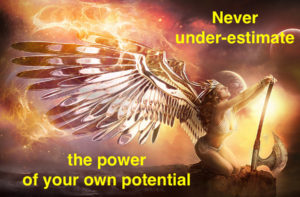
In essence we are pure consciousness and once we
tap into our consciousness without judgment we are able to reach out to our inner
potentiality and creativity. In this space between thoughts there is no fear, no control, no ego, just possibility.
Mantra: Om Bhavam Nama
Chakra: Sahasrara – located at the Crown – spiritual development.
Essence: I am absolute existence
Three-part practice:
1. Cultivate stillness
2. Commune with nature
3. Practice non-judgment
Quote: Never under-estimate the power of your own potential.(E. Burnett) - Law of Giving and receiving
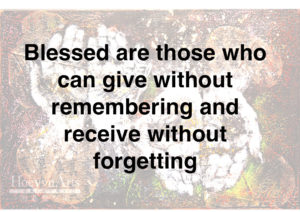
Giving and receiving are opposite expressions of the same flow of energy in the universe. Through giving and receiving we maintain our abundance and harmony. This law is sometimes referred to as the law of circulation. We must be mindful of stagnation. Keep the circulation going, as stagnation could have disastrous consequences. Just imagine taking food or breath into the body and not releasing it! ?A gift doesn’t always have to be a ‘thing’ and doesn’t always have to cost money. Some of the best gifts are for free. We can give people a smile as a sign of positivity or connection. We can give people encouragement so they can reach their goals. We can give a helping hand to people in need. The art of giving and receiving is to show gratitude for the gifts we receive, no matter how small these gifts are and to not expect anything in return when we give what we give. Give freely, without expecting anything in return. in order to avoid our expectations letting us down.
Mantra: Om Vardhanam Namah
Essence: I am the nourisher of the universe and the universe nourishes me
Chakra: Heart chakra (Anahata) – Love and Compassion, circulation
Three-part practice:
1. Practice breath awareness – pranayama
2. Cultivate an attitude of gratitude
3. Acknowledge your needs – don’t be wasteful (remembering the yama Aparigraha and the niyama Tapas. Not hoarding and living with discipline and austerity.
Quote: ‘Blessed are those who can give without remembering and receive without forgetting. (Unknown)
‘Love isn’t love until we give it away.’ (sound of Music) - Law of Karma (or Cause and Effect)
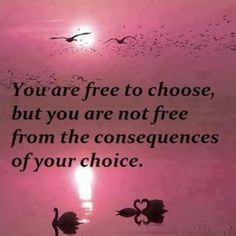 For every action, there is an equal and opposite reaction. We as humans are part of this chain. With every thought, intention, action and emotion that is transmitted from us, we set into motion an unseen chain of effects, which vibrates from the mental plane of thought to the entire cellular structure of body and from there, out into the environment and finally into the Cosmos. Eventually the vibratory energy returns to the original source upon the swing of the pendulum. What comes around goes around, applies to the law of circulation as well as to the karmic law of cause and effect. Our past paves the way to our present and our present-day choices affect our future. We need to step out of our ego, which is ruled by habitual and conditioned behaviours, fear and pride. Once we wake up to our pure consciousness, we can see a wider perspective. We become the witness of our thoughts and actions.As we witness ourselves processing our decisions, we are in a position to ask what the consequences of taking this approach are. This process automatically connects us to our intuition. We might feel in our heart and our gut as to what the right thing to do is in any given situation. Our intuition will usually guide us to the right action.?By aligning our thoughts and actions with the law of cause and effect, we can create harmony and joy, as we are in tune with the world and the people around us. (It is not healthy to constantly staying in our private, narrow perception of the world.)
For every action, there is an equal and opposite reaction. We as humans are part of this chain. With every thought, intention, action and emotion that is transmitted from us, we set into motion an unseen chain of effects, which vibrates from the mental plane of thought to the entire cellular structure of body and from there, out into the environment and finally into the Cosmos. Eventually the vibratory energy returns to the original source upon the swing of the pendulum. What comes around goes around, applies to the law of circulation as well as to the karmic law of cause and effect. Our past paves the way to our present and our present-day choices affect our future. We need to step out of our ego, which is ruled by habitual and conditioned behaviours, fear and pride. Once we wake up to our pure consciousness, we can see a wider perspective. We become the witness of our thoughts and actions.As we witness ourselves processing our decisions, we are in a position to ask what the consequences of taking this approach are. This process automatically connects us to our intuition. We might feel in our heart and our gut as to what the right thing to do is in any given situation. Our intuition will usually guide us to the right action.?By aligning our thoughts and actions with the law of cause and effect, we can create harmony and joy, as we are in tune with the world and the people around us. (It is not healthy to constantly staying in our private, narrow perception of the world.)
Mantra: Om Kriyam Namah
Essence: My actions are aligned with cosmic law
Chakra: Root chakra (Muladhara) – physical body, health and safety.
Three-part practice:
1. Witness your choices – Meditate on a challenge you are facing.
2. Consider the consequences – Write them down if you find it hard to focus(or when your emotions keep interrupting)
3. Listen to your heart/gut (intuition) , but don’t be impulsive.
Quotes: ‘What you sow, you reap.’ ‘If justice is denied, let the law of karma take the ride. ‘Nothing in this world is done without a price.’ - Law of Least Effort
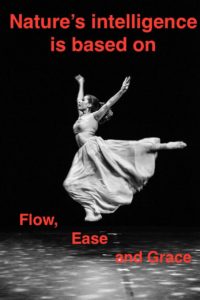
Nature’s intelligence functions with effortless ease. There is rhythm and balance in the natural world. The grass doesn’t have to strain to grow, a river doesn’t have to push to flow and bird don’t have to try and sing, they all function with ease. So when we are in harmony with nature, we naturally tap into the law of least effort by minimising effort and maximising our effect. The law of Least Effort also applies on the yoga mat. Sthira Sukham Asanam is the sutra which lies at the base of our yoga practice – work with steadiness (of body and breath) and ease (body and mind).
Mantra: Om Daksham Namah.
Essence: My actions achieve maximal benefit with minimal effort
Chakra: 2nd chakra on the pelvic region – Creativity chakra (Svadhisthana)
Three-part practice:
1. Relax into the situation you find yourself in. Accept your limitations. Be patient and let yourself be guided into the right direction by your intuition. Check you are not struggling to change things you cannot change
2. Take responsibility for your actions. No need to blame self or others for the situation you are in. Recognise where you are and simply move forward with ease.
3. There is no need to justify or to defend yourself. Ask yourself who do we need to convince and why? Be open to all points of view. Let your intuition guide you.
Quotes: ‘I wonder how much of what weighs me down is not mine to carry.’ Anon
‘Nature’s intelligence is based on flow ease and grace.’ E. Burnett - Law of Intention and Desire
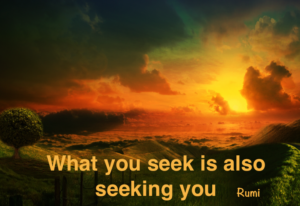
The 5th Spiritual law concerns working with intention and desire. If you want something to grow stronger in your life, direct more of your attention to it. If you want something to diminish in your life, withdraw your attention from it. ?Intention coupled with attention has the power to catalyse the transformation of energy and information into new forms and expressions. According to ancient yogic principles, our intention, or as we often call it Sankalpa has an energy that influences everything we do. For yogis to set a Sankalpa is to release their intention and it becomes part of their practice: part of their every day life, asana practice, pranayama and meditation.
An intention is a directed impulse of consciousness that contains the seed form of that which you aim to create. Like real seeds, intentions can’t grow if you hold on to them. Only when you release your intentions into the fertile depths of your consciousness can they grow and flourish.
Three-part practice:
1. Look deeply into yourself (consciousness) to find what you wish to achieve in in life.
2. Verbalise your intention in your own mind and or write it down, believe it, trust in it and then release it.
3. Detach from the outcome and trust in the process. Your actions will automatically be in line with your intentions. Allow the Universe to handle the details.
Mantra: Om Ritam Namah.
Essence: My intentions and desires are supported by cosmic law.
Chakra: Energy chakra (Manipura) – self empowerment.
Quotes: ‘Your thoughts are the architects of your destiny. ‘David McKay
‘What you think ups become, what you feel you attract, what you imagine, you create.’
‘You create your thoughts, your thoughts create your intention and your intentions create your reality.’ Wayne Dyer - Law of Detachment

Detachment makes a regular appearance in philosophical discussions. This law refers to a sense of perspective that ultimately leads us to mental freedom and the ability to embrace uncertainty.The law of Detachment teaches us to let go of expectations, habits and ideasthat hold us back. It invites us to look at a situation as if we are seeing it for the first time, without preconceived ideas, opinions or emotional interpretations. Once we can let go of all of these, we experience enormous mental freedom. We see more possibilities and opportunities.Understanding how to detach yourself from something that has an enormous impact on your life, is to understand why you are attached to a particular attitude towards this event in the first place. I really like Eckhart Tolle’s way of self questioning: Do I have a thought or does the thought have me (in its power)
Often our attachment is based on fear and insecurity. The search for security is one of those qualities of the mind we need to recognise as an illusion. We all know life is constantly changing. Within that uncertainly or insecurity lies the wisdom of potentiality, of freedom and creativity. We find happiness and fulfilment in embracing this constantly changing environment. Walking away or hiding in fear, traps us into un unbearable scenario.
Mantra: Om anandham Namah
Essence: Relinquish the need for constant control and embrace uncertainly ?Chakra: Vishuddhi – expressing your authentic self without judgment.
Three-part practice:
1. I commit myself to detachment. I will not rigidly impose my idea of how things SHOULD be.
2. I embrace uncertainty, because here lies my future path of opportunity and freedom. I trust that all will work out the way it is meant to.
3. I have the ability to see my situation from a wider perspective. I am open to new experiences and I can see the infinity of choices that are available to me.
Quote: ‘Do you have a thought or does a thought have you?’ Eckhart Tolle - Law of Dharma
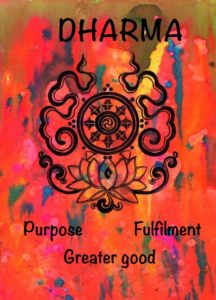
This is the final spiritual law of Yoga. The Sanskrit word Dharma comes from the root “dhri” which means to uplift or uphold. Dharma literally refers to “that which upholds righteousness.” A sense of righteousness, of purpose and inspiration is extremely significant on the spiritual path. Dharma is often referred to as the moral force that orders the universe. In other words if our actions reflect our moral code of compassion, love and respect for all living beings, we follow our higher path and are on the way to fulfil our purpose in life.
We all have unique talents and these talents are given to us to serve humanity – the greater good. Chopra says: ‘Every person is a never-ending project of the universe. The project belongs to the universe, but the path is yours.’
DHARMA: refers to one’s duty in this life. Your dharma varies according to your class, your culture, and the time of your life.
KARMA: refers to the actions that one does in relation to one’s dharma. In a sense, dharma could be seen as one’s lifelong task, and karma, the steps that one has to take to complete the task.
Mantra: Om Varunam Namah
Essence: Be in touch with your higher Self
Chakra: Ajna chakra – inner knowing and intuition.
Three-part practice:
1. Reflection on that what motivates and drives us.
2. The moral codes we apply in our everyday lives.
3. The importance of becoming the best version of ourselves and serving the greater good with our unique talents.
Ultimately, the understanding of 3 qualities will bring us a life that gives us fulfilment and joy.
Quotes: ‘Live your Dharma not your drama.’ ‘It is better to do your own dharma imperfectly than someone else’s perfectly.’ Bhagavad Gita
